 Delhi
DelhiTake A Walkthrough Of The Qutub Complex Housing The Qutub Minar, Iron Pillar & Alai Darwaza
Delhi is one place where at almost every turn, a monument of historical significance looms ahead. With Purana Qila on one of the city’s busiest roads and the Qutub Minar towering over the city’s skyline, living in Delhi is akin to living in the midst of history. The Qutub Complex is an amalgamation of different structures and monuments found here.
The Qutub Minar
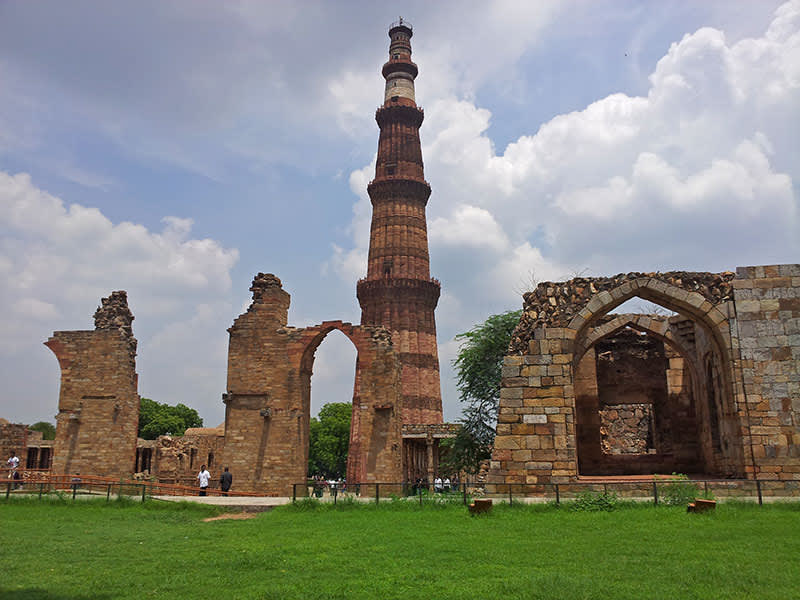
Starting with the most famous structure of them all, the Qutub Minar is a 72 metre high minaret of victory (the world’s tallest brick minaret) located in Mehrauli. It was started by India’s first Muslim ruler, Qutb-ud-din Aibak and construction work on it was continued by Iltutmish and Firoz Shah Tughlak. It took almost 150 years to be completed. Islamic culture integrated with Hindu art so beautifully, making this monument a masterpiece and Delhi’s pride.
The complex also houses a mosque which claims to be the first mosque ever built in this country. Its structure is made from marble, grey quartz and red sandstone; the design is similar to that of Ajmer Mosque. Sadly, it’s in ruins today, however, the beautiful geometric patterns and floral motifs used can still be seen.
The Iron Pillar
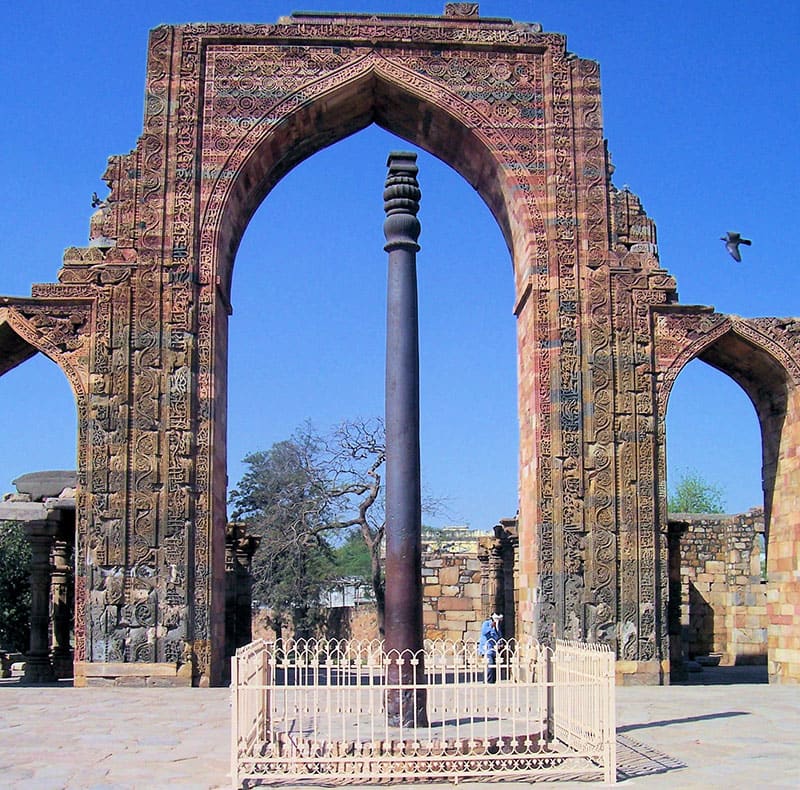
This pillar is a wonder in the true sense; it has withstood corrosion for as long as 1,600 years. It is 7.2 metres high and weighs more than six tonnes. It was built in the memory of King Chandra. This structure has led to a lot of metallurgical curiosity amongst various scholars all over the world!
The Alai Darwaza
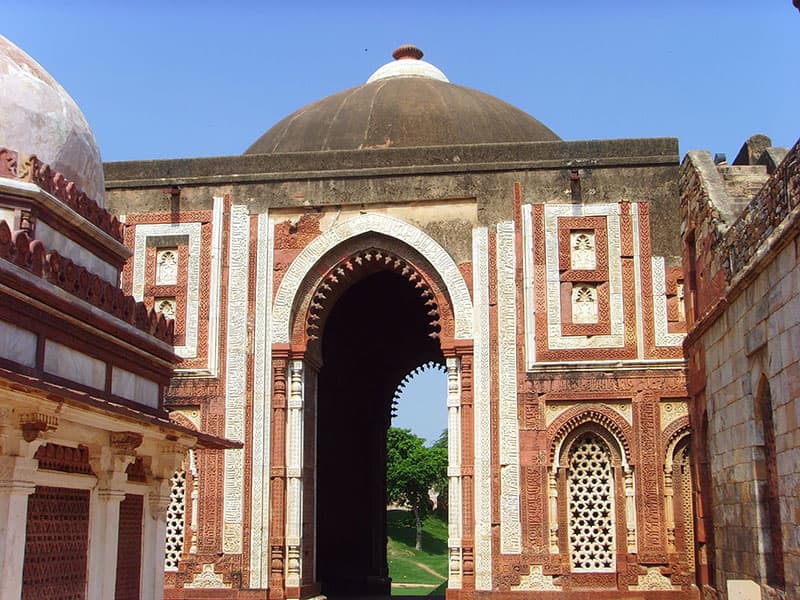
The Alai Darwaza is the oldest gate built in Delhi. This symmetrical gate is very historic with beautiful carvings of lotus flowers and other images featuring latticework on it and is mostly built from red sandstone; although white marble has also been used. This gate consumes the southern part of the Qutub Complex and is a gateway to the Quwwat-ul-Islam Mosque.
The Tomb Of Iltutmish
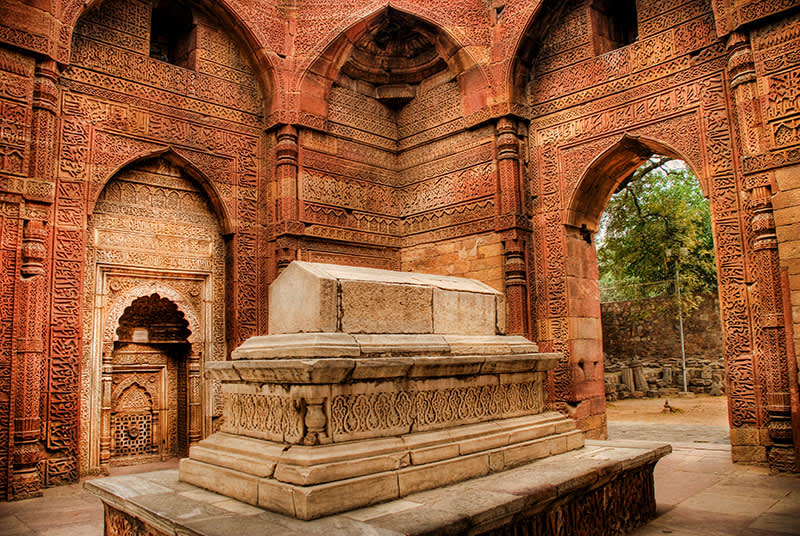
Built by Iltutmish himself, this tomb is located to the northwest of the Quwwat-ul-Islam Mosque. The blend of Indo-Islamic art with plain exteriors and the contrasting ornamented interiors increase the charm of the Qutub Complex.
The Tomb Of Imam Zamin
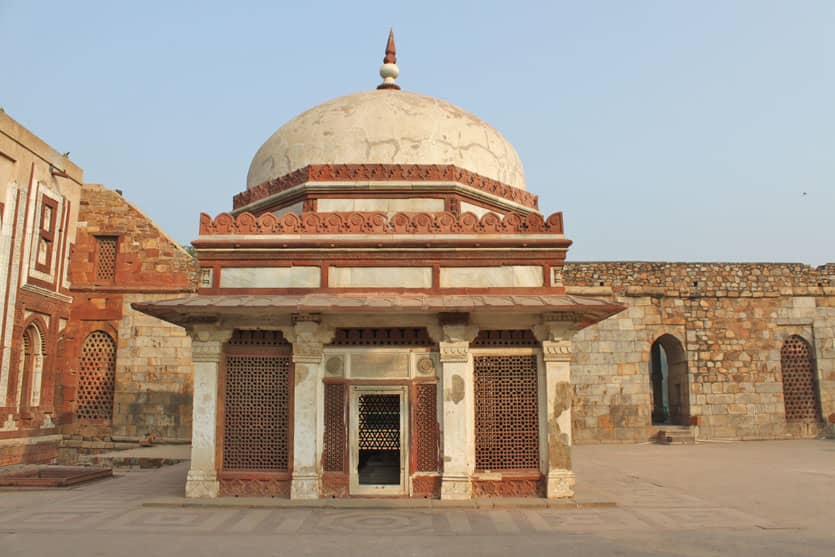
Imam Zamin was an Islamic preacher and saint from Turkistan. He built his own tomb and was buried here which is located in the main complex, next to Alai Darwaz, and forms an integral part of the cultural kaleidoscope of monuments here.
The Alai Minar
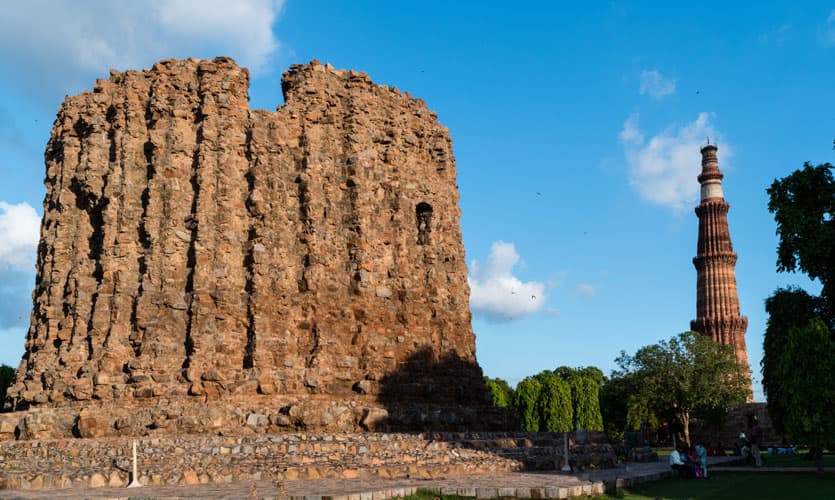
This reflects the incomplete dreams of Alauddin Khilji. He wanted to build this Minar, to give competition to the Qutub Minar but before the completion of this Minar, he died and nobody made any effort to finish his project. Alai Minar is thus, the incomplete dream of a man who wished for something more.
Alauddin Khilji’s Tomb And Madrasa
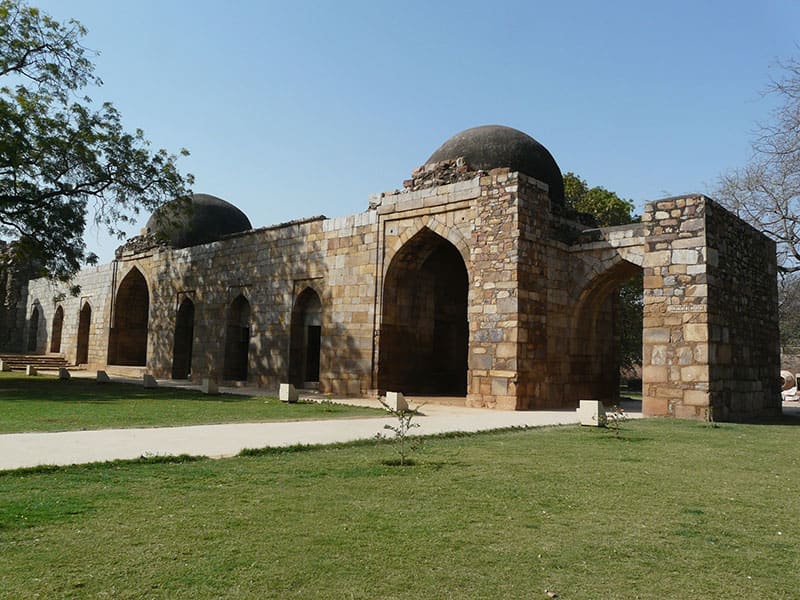
This structure is one of the major attractions here and is located in the backyard of this complex. There is a fee of Rs 10 for Indians and Rs 250 for foreigners to see this monument. The madrasa (educational institution) is L-shaped and consists of a college and also has individual cells which were used to impart religious teachings. Sadly, even this tomb is in ruins today.
Guided tours can be availed of and there is also a festival called the Qutub Festival organized annually where eminent music personalities, the likes of Indian Ocean and Sonu Nigam have performed in the past, making it a must visit.
For a concentrated dose of history and eras long gone, come by to spend a wondrous afternoon at Qutub Complex!
Where | The Qutub Complex - Mehrauli
Timings | 7 AM - 5 PM
Entry | Rs 30
Like
Bookmark
Share

